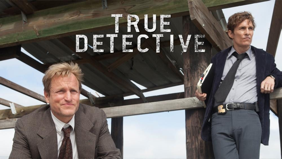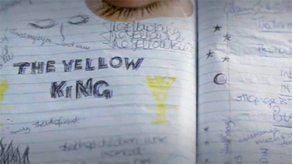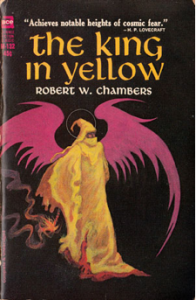True Detective’s True Detectives
 True Detective is one of those shows. You know the kind I am talking about, right? The kind of show that lights a fire in the popular imagination and becomes the spark for conversation, dialogue and debate in those legendary water-cooler moments or in the cyberspace equivalent. The kind of show that raises eye-brows, fosters ‘o’-shaped exclamations, hushed tones and bated breath. The kind of show that questions our notions of television that, we are told over and over, is not TV. Remember:
True Detective is one of those shows. You know the kind I am talking about, right? The kind of show that lights a fire in the popular imagination and becomes the spark for conversation, dialogue and debate in those legendary water-cooler moments or in the cyberspace equivalent. The kind of show that raises eye-brows, fosters ‘o’-shaped exclamations, hushed tones and bated breath. The kind of show that questions our notions of television that, we are told over and over, is not TV. Remember:
It’s HBO.
True Detective has rapidly entered the pantheon of television drama shared by luminaries such as The Wire, Breaking Bad, The Sopranos and so on. Indeed, the adventures of Marty and Ruste Cohle have kept this commentator on the edge of his seat for eight weeks now. But what I am interested here is the audience of forensic textual foragers that, like the true detectives themselves, followed the scattered bread crumbs that led towards, not the yellow brick road, but the yellow king and the city of Carcosa.
The tail-end of episode 1 had Charlie Lang mention a king, but it is in episode two when the motif is concretised as Rust reads aloud from Dora Lang’s diary: “I closed my eyes and saw the king in yellow moving through the forest. The king’s children are marked, they all become his angels.”
The camera zooms in on the diary and we see fragmented quotations that turn out to be lifted from a collection of short stories by Robert W. Chambers first published in 1895 titled The King in Yellow. Michael Hughes wrote an interesting and illuminating article for i09 in February which details the connections between True Detective and The King in Yellow. I do not wish to tread the same ground here.
 Rather, what interests me is how references to The King in Yellow spawned an online man-hunt for the killer of Dora Lang by participants reading the Chambers collection as a code-breaking device to solve the crime within the show. Indeed, the creativity and dedication of the viewing populace never ceases to astound me no matter how many times I witness it. I am guessing that a great deal more people just watched the show’s mysteries unfold in their living rooms rather than deputising themselves and microscopically examining a 19th Century text for clues; but for some viewers, True Detective’s enigmatic coding frequencies invited them into the text to play in the sand-box of textuality and allusion. The sudden surge in popularity of the book turned an obscure ‘weird fiction’ text into a bestseller on Amazon almost overnight based solely on references within True Detective. Anna Russell, writing for Speakeasy, states that the book ‘shot up 71% in 24-hours to reach number 7 on Amazon’s bestseller list.’
Rather, what interests me is how references to The King in Yellow spawned an online man-hunt for the killer of Dora Lang by participants reading the Chambers collection as a code-breaking device to solve the crime within the show. Indeed, the creativity and dedication of the viewing populace never ceases to astound me no matter how many times I witness it. I am guessing that a great deal more people just watched the show’s mysteries unfold in their living rooms rather than deputising themselves and microscopically examining a 19th Century text for clues; but for some viewers, True Detective’s enigmatic coding frequencies invited them into the text to play in the sand-box of textuality and allusion. The sudden surge in popularity of the book turned an obscure ‘weird fiction’ text into a bestseller on Amazon almost overnight based solely on references within True Detective. Anna Russell, writing for Speakeasy, states that the book ‘shot up 71% in 24-hours to reach number 7 on Amazon’s bestseller list.’
Of course, the concept of participatory engagement is nothing radically new and has been discussed at length by Henry Jenkins and Jonathan Gray, among other scholars. But laying intertextual ‘Easter eggs’ within a HBO show that invites audience members to partake in the hunt for a serial killer? That strikes me as quite a departure.
Or, at least, it did. For I am making the assumption that the creators of True Detective knew instinctively that this is what would happen; that by threading oblique references within the text, the interactive viewer would not be able to help themselves exclaiming, ‘the game’s afoot,’ as they grasp deerstalker hat and magnifying glass to join the hunt for the yellow king.
 On the other hand, perhaps the show’s creators understand the twenty-first century viewer, or at least a portion of it, and the penchant for extra-curricular investigations. The ABC show, Lost, crafted a sprawling online metropolis for dedicated fans to join a quest to solve the island’s mysteries while also laying intertextually furnished motifs in an array of locations that explicitly referenced The Wizard of Oz, for example, and other cultural artefacts.
On the other hand, perhaps the show’s creators understand the twenty-first century viewer, or at least a portion of it, and the penchant for extra-curricular investigations. The ABC show, Lost, crafted a sprawling online metropolis for dedicated fans to join a quest to solve the island’s mysteries while also laying intertextually furnished motifs in an array of locations that explicitly referenced The Wizard of Oz, for example, and other cultural artefacts.
Clearly, True Detective does not function on the same-level as Lost’s postmodern campaign. But then Lost is not a HBO show. True Detective is.
I wonder if anyone out there mapped audience reactions and theories as the show aired. Of course, in this era of digital communication and web 2.0, the internet is rife with websites and forums that do not simply vanish overnight and this is certainly an area for further study.
I, for one, intend on re-watching True Detective through the prism of Chamber’s collection. The game is afoot, indeed.



Great to see Chambers’ book getting more attention, but what about the disappointment of fans when they realized that it was largely a red herring? The show actually doesn’t reward the viewer for the kind of forensics many fans believed they were being encouraged to enact. The King in Yellow mythology is used primarily to set a tone and establish a background of pervasive historical evil; and in that regard it was quite effective.
I really like your article. You know a TV show is good when it can get people interested in Nietzsche and literature in general! It’s really hard to make any kind of entertainment include this kind of academic material and still be so loved by everyone. Going to miss this TV show!